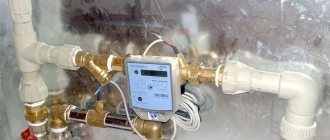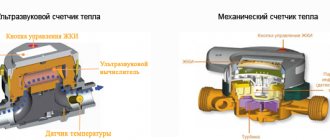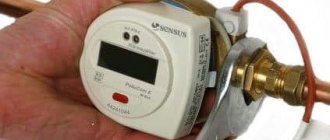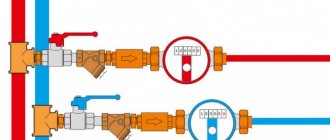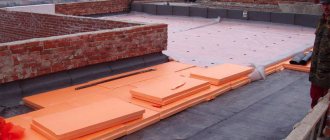This article is part of the series of publications “Myths of Housing and Communal Services”, dedicated to debunking false theories of the housing sector. Myths and false theories, widespread in the housing and communal services sector of Russia, contribute to the growth of social tension, the development of the “Concept of Enmity” between consumers and providers of utility services and residential maintenance services, which leads to extremely negative consequences in the housing industry. The articles in the series are recommended primarily for consumers of housing and communal services, however, specialists in housing and communal services may also find something useful in them. In addition, distributing publications in the “Housing and Communal Services Myths” series among housing and communal services consumers can contribute to a deeper understanding of the housing and communal services sector by residents of apartment buildings, which leads to the development of constructive interaction between consumers and service providers.
The myth discussed in this publication promotes the idea that there is no obligation for premises owners to pay for the installation of common house metering devices (hereinafter referred to as the metering devices). To substantiate their position, false theorists usually refer to two norms: Article 13 of the Federal Law of November 23, 2009 No. 261-FZ (hereinafter referred to as Law 261-FZ) and subparagraph “k” of paragraph 11 of the Rules for the maintenance of common property, approved. RF PP dated August 13, 2006 No. 491 (hereinafter referred to as Rules 491), which imposes the obligation to establish operating conditions either on management organizations (hereinafter referred to as MA) or HOAs, or on resource supply organizations (hereinafter referred to as RSO).
The essence of the false theory
Article 13 of Federal Law No. 261-FZ of November 23, 2009 (hereinafter referred to as Law 261-FZ) establishes the obligation of resource supply organizations (hereinafter referred to as RSO) “to carry out activities for the installation, replacement, operation of metering devices for energy resources used, the supply or transmission of which they carry out " and "to take actions to equip facilities with metering devices for the energy resources used, the supply and transmission of which the specified organizations carry out, the engineering and technical equipment of which is directly connected to the engineering support networks belonging to them and which ... were not equipped with metering devices for the energy resources used within the prescribed period."
From the presented norm, conclusions are drawn that common house metering devices (and some people talk about individual metering devices) must be installed by RSO.
Subparagraph “k” of paragraph 11 of the Rules for the maintenance of common property, approved. RF PP dated August 13, 2006 No. 491 (hereinafter referred to as Rules 491), the maintenance of common property includes “ensuring the installation and commissioning of control centers.” Consequently, the corresponding responsibility for installing the control center falls on the persons performing maintenance work (UO/HOA/housing cooperative).
Thus, according to the supporters of the false theory under consideration, communal metering devices are required to be installed by either the RSO or the management unit/homeowners' association/housing cooperative, while all the costs of installing the RSO must be borne by these persons themselves; the false theorists do not allow such costs to be imposed on the owners of the premises.
Restrictions on installing a heat meter in an apartment
Many consumers are interested in whether heating meters are installed individually in each apartment?
The fact is that in most domestic apartment buildings, when creating a heating system, vertical riser wiring is used, which prevents the installation of one apartment meter. In such a situation, there is only one solution - to install meters on heating radiators, but such a solution is difficult to implement for the following reasons:
- installing several heating appliances in one apartment will cost its owners a tidy sum, since each meter for a heating battery costs a lot of money;
- Taking readings from each device is made difficult by the fact that utility workers are not able to walk through all the rooms in the apartments of the house on a monthly basis to record the data. When doing this work yourself, you can get confused in the numbers and make mistakes in the calculations;
- presence of maintenance problems - several devices are much more difficult to control and verify their correct functioning;
- The meter for a heating radiator has poor accuracy, since the difference at its input and output is so small that the device is often unable to record it.
A way out of this situation can be the installation of special distributors that measure the flow rate of the coolant liquid, based on the temperature difference between the surface of the radiator and the air in the room. The cost of one such device is quite affordable for the consumer.
In buildings erected after 2000, horizontal distribution of the heating system is used, so in such apartments it is enough to install one heat energy consumption meter, and no distributors are required.
As a result of the above measures, it is possible to significantly reduce monthly payments for services provided by utility companies through the installation of heat meters.
Who owns the OPU?
First of all, you need to figure out whose property the common house meters are.
According to Rules 491, common house metering devices for utility resources are included in the common property (hereinafter referred to as OP). This rule is established for cold, hot water and gas operating facilities (clause 5 of Rules 491), thermal energy operating facilities (clause 6 of Rules 491), and electricity operating facilities (clause 7 of Rules 491). The above norms are imperative; they indicate the unconditional inclusion of the public educational institution in the composition of the electoral commission.
In accordance with Part 1 of Article 36 of the Housing Code of the Russian Federation, Part 1 of Article 290 of the Civil Code of the Russian Federation, the common property in an apartment building belongs specifically to the owners of the premises in such a building. According to the preamble of the already mentioned Rules 491, “These Rules regulate relations regarding the maintenance of common property owned by the right of common shared ownership to the owners of premises in an apartment building (hereinafter referred to as common property).”
From the above it follows that the public utility resources are part of the common property, and the public utility itself is owned by the owners of the premises in the apartment building. That is, the owners of premises in the apartment building have the right of ownership to common house metering devices.
It is interesting that false theorists do not dispute the ownership right of the owners of premises in the subdivision, but consider it quite acceptable that the acquisition of such equipment as the subcontractor in the ownership of the owners of premises in apartment buildings can be carried out at the expense of other persons - the same RSOs, management units/housing associations/housing cooperatives.
Or maybe supporters of the false theory admit the possibility that public utility companies are owned by the organizations that established them (RSO or UO/HOA/HCC)? But then, for example, in the event of a change in the supplier of a utility resource or the person managing the house (or when changing the method of managing an apartment building), the owner of the control center has the right to dismantle the previously installed control center and use it at his own discretion. And during the operation of the control center, the organization that owns the device may not allow the owners of the premises to access such a device, and in general do whatever they want with this control device.
However, housing legislation does not allow management or resource supply organizations the right to dispose of metering devices, but gives such rights to the owners of premises in apartment buildings. At the same time, as mentioned earlier, the OPU is part of the OI, which belongs to the same owners of the premises in the apartment building.
No provision of the current legislation can impose on any person the obligation to acquire any property at his own expense for the purpose of subsequent gratuitous transfer of this property to other persons.
OPU is no exception. It is unacceptable to oblige the RSO (whose activities are regulated, and the regulator does not allow sunk expenses for the acquisition of operating assets), the management company (which exclusively executes the management agreement - that is, performs the work that is provided for in the agreement, at the expense of the owners’ funds contributed as payment for services in the amount , determined by the same agreement) or HOAs/housing cooperatives (which are non-profit organizations and operate strictly according to approved estimates of income and expenses) incur some additional costs for installing the control center without subsequent compensation for the costs incurred.
Installation of heat energy meters
According to experts, the best solution to the question of where to install a meter is to install a common house heat meter.
Then all consumers living in the house will not have to pay for thermal energy, which was not actually supplied to the building. But the cost of a common house heating meter is quite high. True, if you divide it by the number of apartments, it will be quite affordable. To install a communal heat meter, you will first need to hold a general meeting of residents, document the decision made (draw up and sign a protocol) and submit an application to the management company with a request to connect the unit. After the heat meter is installed, you will need a person from among the consumers responsible for timely taking readings from the device and issuing receipts for each apartment.
If not all residents of the house or entrance agree to install a heat meter, then the apartment owner should think about how to significantly reduce the financial costs of individual heating of their own home.
Who should install the OPU?
Article 13 of Law 261-FZ indeed establishes the obligation of RSOs to “carry out activities for the installation, replacement, operation of metering devices for used energy resources, the supply or transmission of which they carry out” (Part 9 of Article 13), as well as “to carry out actions to equip metering devices for used energy resources, the supply and transfer of which are carried out by the specified organizations, objects...” (Part 12 of Article 13).
However, it should be noted that such actions, in accordance with the same Article 13, are carried out by RSO only if the specified objects “were not equipped with meters for the energy resources used within the prescribed period.”
It turns out that the RSO acquires the obligation to equip the facility of the control center only if certain persons have not fulfilled such an obligation within a certain specified period. And what kind of faces are these?
The answer to this question is provided by Part 5 of Article 13 of Law 261-FZ, which establishes: “owners of premises in apartment buildings put into operation on the date of entry into force of this Federal Law are obliged to ensure that such houses are equipped with meters for used water, heat energy, and electrical energy , as well as putting installed metering devices into operation.”
In accordance with Part 12 of Article 13 of Law 261-FZ, resource supplying organizations “are obliged to take actions to equip with metering devices for the energy resources used, the supply and transfer of which these organizations carry out, objects whose engineering and technical equipment is directly connected to their engineering and technical networks. security and who, in violation of the requirements of parts 3 - 6.1 and 8 of this article, were not equipped with meters for the energy resources used within the prescribed period."
That is, the legislator imposed the obligation to equip apartment buildings with common house metering devices specifically on the owners of premises in such houses, while stipulating that if, due to irresponsibility or other reasons, these owners do not fulfill this obligation, then the RSO can establish a public control system.
Subparagraph “k” of paragraph 11 of Rules 491 refers to the maintenance of common property as “ensuring the installation and commissioning of the control center”. In accordance with Part 1 of Article 161 of the Housing Code of the Russian Federation, the management of the MKD must ensure the proper content of the PO in the MKD. And since the person managing the apartment building is obliged to carry out work on the maintenance of the public building, it turns out that the management company/homeowners' association/housing cooperative actually must install public safety management facilities in the apartment building.
However, it is necessary to pay attention to a number of circumstances.
If the house is managed by a management organization (MA), then such an organization operates on the basis of an appropriate management agreement.
Clause 2 of Part 3 of Article 162 of the Housing Code of the Russian Federation establishes that the management agreement must indicate “a list of works and (or) services for the management of an apartment building, services and works for the maintenance and repair of common property in an apartment building, the procedure for changing such a list.”
That is, the management company is indeed obliged to establish the operating conditions, but only if this type of work is provided for in the management agreement (or an additional agreement). Moreover, by virtue of Part 1 of Article 162 of the Housing Code of the Russian Federation, “When choosing a management organization by a general meeting of owners of premises in an apartment building, a management agreement is concluded with each owner of the premises in such a building on the terms specified in the decision of this general meeting.”
That is, in order to carry out work on installing the control center, the management organization must either make changes to the current management agreement or enter into an additional agreement. And without a decision of the general meeting of premises owners, this cannot be done.
If the house is managed by a HOA, then, in accordance with clause 8 of Part 2 of Article 145 of the Housing Code of the Russian Federation, approval of an annual plan for the maintenance and repair of common property in an apartment building falls within the competence of the general meeting of HOA members.
That is, in the case of a house being managed by an HOA, the work on installing safety equipment must be included in the annual plan for maintaining the common property, and such inclusion in the plan is possible only by decision of the general meeting of HOA members.
Mechanical heat meters
Mechanical (or tachometer) heat energy meters shown in the photo are simple units. They usually include a heat meter and a rotary water meter. The principle of how this type of heating meter works is as follows: for convenience and accuracy of measurement, the translational movement of the coolant liquid turns into a rotational one.
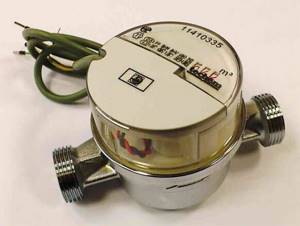
A mechanical (tachometer) meter is a very economical purchase, but the cost of filters should be added to its price. As a result, the kit will cost the consumer about 15% less than other types of heat meters, but provided that the pipeline diameter does not exceed 32 millimeters.
Mechanical devices have a significant drawback - they cannot be used when the coolant (water) has a high degree of hardness and if it contains particles of rust, scale or scale, since they clog filters and flow meters.
Vortex heat meter
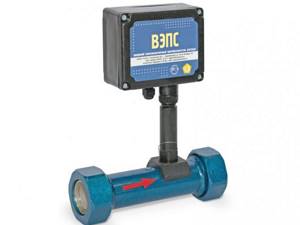
The operation of this device is based on a natural mechanism - a natural phenomenon, the so-called water funnel. By design, the device consists of a triangular prism (installed vertically), a magnet (in the outer part) and an electrode (for monitoring flow pressure). At high speed, vortices form a constant path, and the stalled flow of water in the pipeline creates pulsations, which determine the volume of incoming coolant.
Pros: not affected by deposits and iron residues (rust, scale), placed on both vertical and horizontal sections, not picky about the length of straight sections and minor contaminants.
Disadvantages: sensitive to changes in the working fluid, not suitable for use in steam heating systems, fails when there are large impurities in the water, dependent on a constantly stable pressure.
